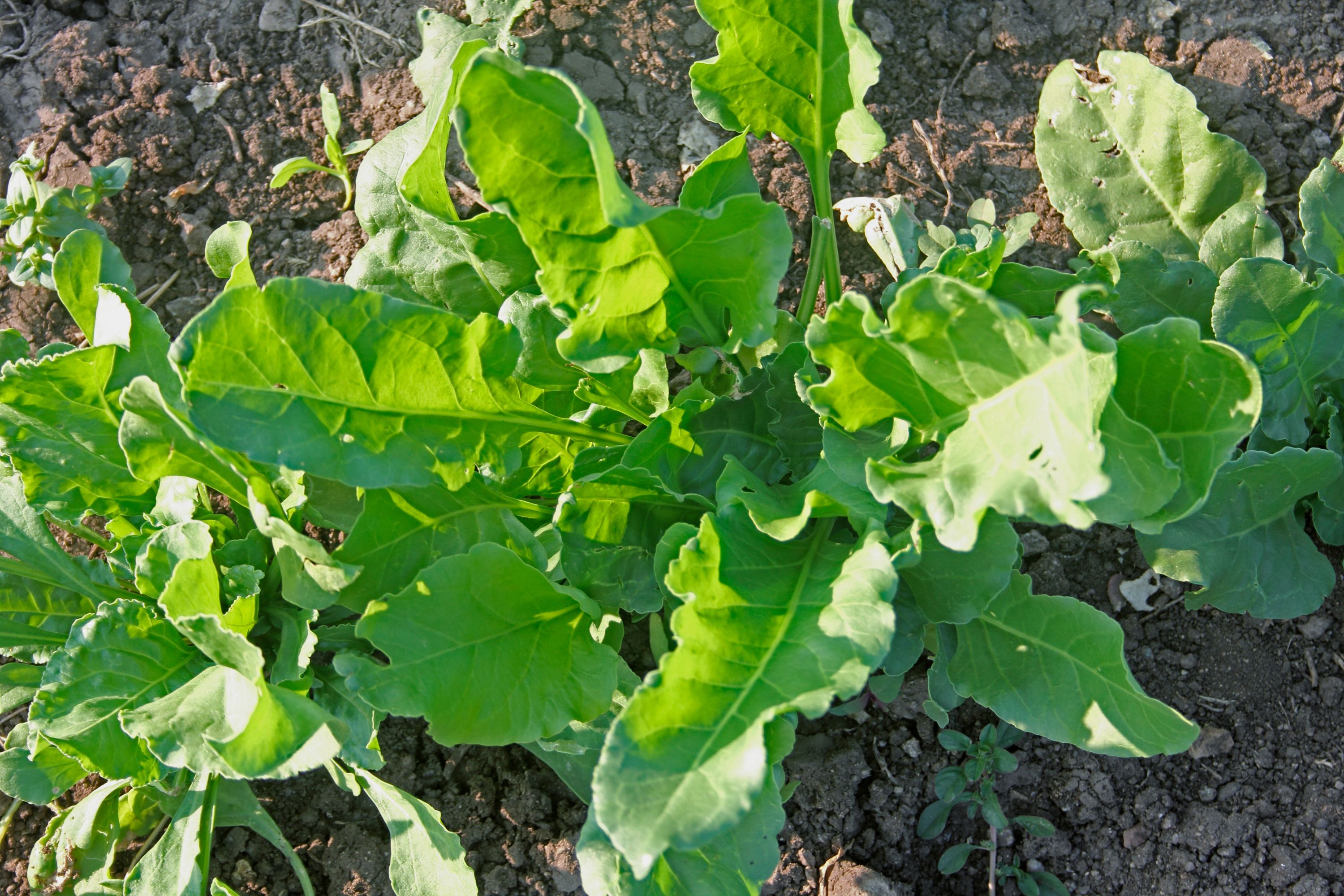Spinach
(Spinacia oleracea)

Description
Spinach (Spinacia oleracea) is a leafy green flowering plant native to central and western Asia. It is of the order Caryophyllales, family Amaranthaceae, subfamily Chenopodioideae. Its leaves are a common edible vegetable consumed either fresh, or after storage using preservation techniques by canning, freezing, or dehydration. It may be eaten cooked or raw, and the taste differs considerably; the high oxalate content may be reduced by steaming. It is an annual plant (rarely biennial), growing as tall as 30 cm (1 ft). Spinach may overwinter in temperate regions. The leaves are alternate, simple, ovate to triangular, and very variable in size: 2–30 cm (1–12 in) long and 1–15 cm (0.4–5.9 in) broad, with larger leaves at the base of the plant and small leaves higher on the flowering stem. The flowers are inconspicuous, yellow-green, 3–4 mm (0.1–0.2 in) in diameter, and mature into a small, hard, dry, lumpy fruit cluster 5–10 mm (0.2–0.4 in) across containing several seeds. In 2018, world production of spinach was 26.3 million tonnes, with China alone accounting for 90% of the total. Originally from Persian aspānāḵ, entering into the European languages by way of Latin, which received it from Arabic. The Hindi word “Palak” also has its roots in Persian. The English word "spinach" dates to the late 14th century from espinache (French: épinard). Common spinach (S. oleracea) was long considered to be in the family Chenopodiaceae, but in 2003 that family was merged into the Amaranthaceae in the order Caryophyllales. Within the family Amaranthaceae sensu lato, Spinach belongs to the subfamily Chenopodioideae. Raw spinach is 91% water, 4% carbohydrates, 3% protein, and contains negligible fat. In a 100 g (3.5 oz) serving providing only 23 calories, spinach has a high nutritional value, especially when fresh, frozen, steamed, or quickly boiled. It is a rich source (20% or more of the Daily Value, DV) of vitamin A, vitamin C, vitamin K, magnesium, manganese, iron and folate. Spinach is a moderate source (10-19% of DV) of the B vitamins, riboflavin and vitamin B6, vitamin E, calcium, potassium, and dietary fiber (table). Although spinach is touted as being high in iron and calcium content, and is often served and consumed in its raw form, raw spinach contains high levels of oxalates, which block absorption of calcium and iron in the stomach and small intestine.
Taxonomic tree:







